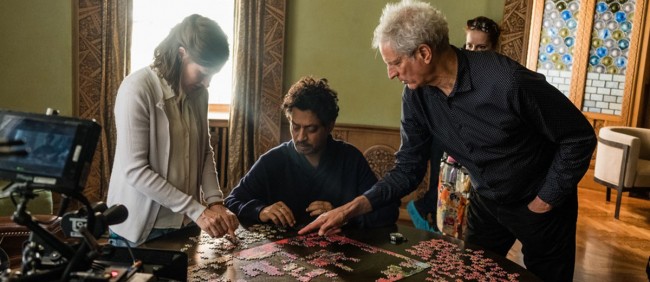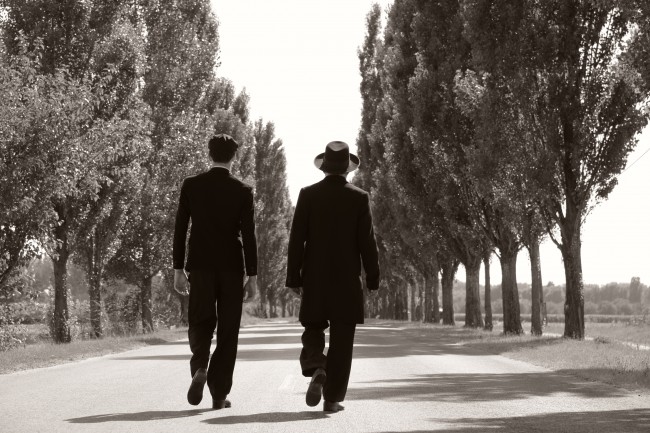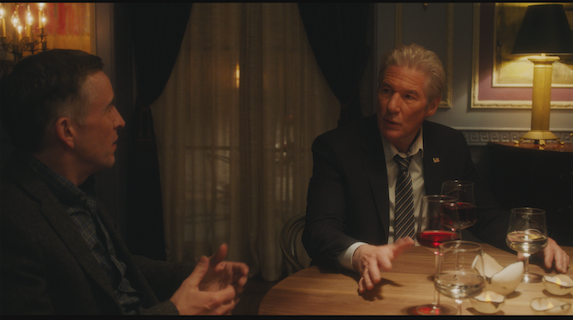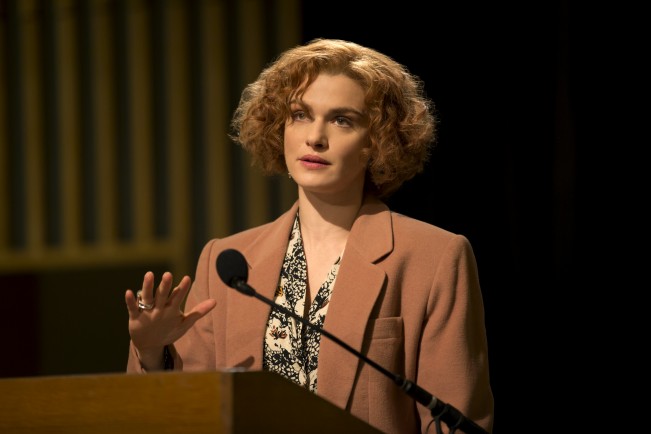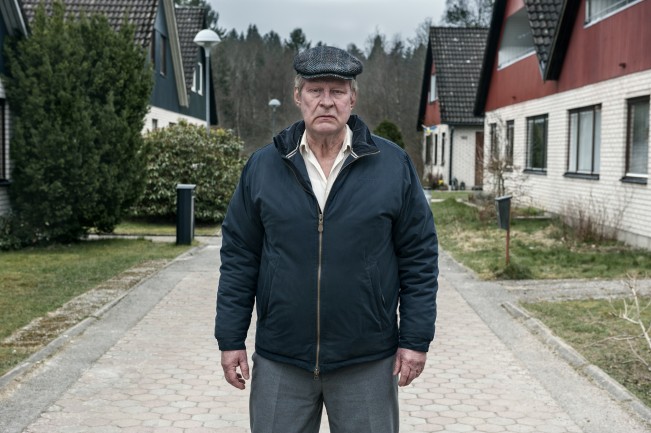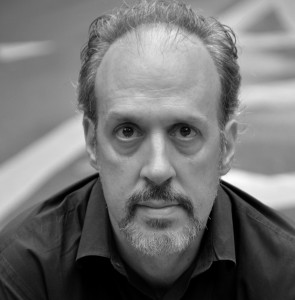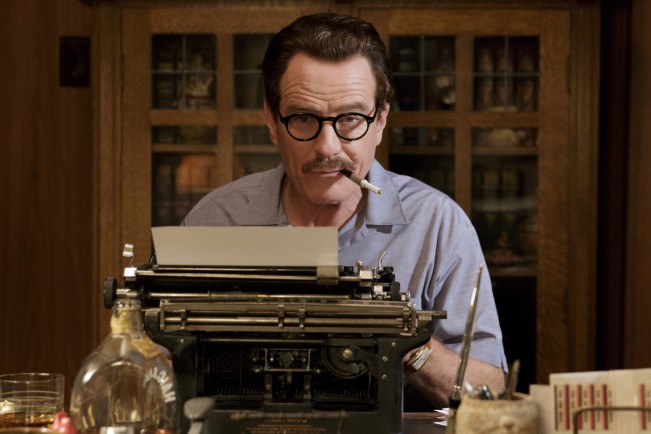Puzzle, a beguiling contemporary love story adapted by Oren Moverman and Polly Mann from Natalia Smirnoff’s 2009 Argentinian film Rompecabezas, heralds producer Marc Turtletaub’s arrival as a director. Upon leaving a long career in the financial industry he transitioned to film in 2004, and after only four features, enjoyed his big breakthrough in 2006 as one of the producers behind Little Miss Sunshine. After that he was on a roll, producing such acclaimed pictures as Chop Shop (2007), Away We Go (2009), Jack Goes Boating (2010), Safety Not Guaranteed (2012), and Loving (2016).
His movies tend to be about relationships rather than genre, and Puzzle especially reflects that sensibility, although it nods to the genre of the Forties and Fifties that was known as the women’s picture. Kelly Macdonald plays Agnes, a suburban housewife who has spent her life devoted to taking care of men–her father, husband, and two sons—seemingly without question. When by chance she discovers she has an uncanny knack for assembling complex jigsaw puzzles in record time, she ventures into Manhattan to buy more, and stumbles upon an ad from a wealthy businessman named Robert (Irrfan Khan) who is looking for a partner with whom to compete in an upcoming jigsaw championship. What follows is a journey of discovery, where Agnes winds up surprising everyone: Robert, her family, herself, and us.
Andrea Gronvall: Could we talk about the tone of Puzzle? The opening sequence feels old-fashioned, in that we see this housewife, Agnes, toiling alone in this big old house. There are no digital distractions, no TV in the background, like in the 1950s. Then we learn she’s doing all this scrubbing, decorating, and baking for her family and guests, yes, but it’s her own birthday party. The setup is not only funny, which it is supposed to be, but it also stings, you know? And that establishes the tone for the rest of the film, because you blend these different emotions—love, devotion, levity, pain—into a current that builds momentum as it flows outward. How do you decide, going in, what the tone of a film is going to be, and how do you maintain it?
Marc Turtletaub: That is a question I haven’t heard before, and I think about it a lot—not necessarily when I’m shooting, but beforehand. You think about how grounded you want a story to be, but then you also think about sections of a movie. The opening of the movie does feel like it’s going to be about the 1950s, and that was intentional. We shot it in silhouette; we shot it with Agnes wearing a dress that could have been from a different generation—it almost blends into the wallpaper, right?—but subliminally. And although this is 2018, the house itself feels like it’s frozen in time; it was the house she was raised in.
As far as overall tone is concerned, I’m drawn to nuanced characters, characters that aren’t stereotypical, but distinct. When I have real characters, who are behaving in a real way, it helps to define what the tone of a movie will be. And sometimes you find it in the editing. You have a certain intention going in, then you’ll realize, okay, I’ve shot this scene three ways, and I want to be consistent with the tone of the movie, so I’ll pick this take over that one. It’s a question that’s hard to answer, but you often are developing the tone as you go.
AG: What was your average number of takes, and did you rehearse with your actors beforehand? You shot Puzzle in, what, six weeks?
MT: We shot it in 30 days. And I would typically do three to five takes, and not rehearse, because I wanted the actors to bring in what they were going to without my mediation. I had amazing actors, and because I’ve become wiser as I’ve gotten older, I’ve learned to let great actors do what they can do.
AG: Kelly Macdonald is terrific.
MT: She’s marvelous, isn’t she?
AG: She was the best thing about Goodbye Christopher Robin. And then there’s Boardwalk Empire and No Country for Old Men.
MT: She’s wonderful in everything she touches. She’s a chameleon, so I love her as an actress. And she’s in every scene in this movie.
AG: She carries Puzzle, without a doubt, but I’m not going to slight Irrfan Khan.
MT: No, Irrfan is one of our great actors. Because I hadn’t rehearsed, I didn’t know what his performance would be like until we were rolling. And it was so unexpected, and that’s what I always want in a movie, a story where I don’t know which way it’s going to turn, and performances that are not what I expect. And that’s what I got from him, in spades.
AG: You must have seen The Lunchbox, right? Was that a factor in your casting him?
MT: Yeah, a big one. I loved it.
AG: Khan has such range. Whatever he’s in, he elevates the material. But maybe because I haven’t seen a lot of his Bollywood films, I never thought of him as a romantic lead until The Lunchbox. In Puzzle he’s almost rakish, but just as appealing.
MT: He is a handsome guy. It’s not typical casting for him, and I think that’s why he wanted to do it, and came all the way from India to shoot it, because it’s not where you expect to see him.
AG: Is Agnes attracted to his character Robert because he’s so worldly, and she’s been so sheltered? Is it a case of opposites attract?
MT: That’s a good question. The viewers will have to answer it for themselves, but I know that many of the women who have seen the movie said what a handsome man he is. And my editor—it’s really funny—I wanted a female editor [Catherine Haight] because this is principally a story about a woman, and as a man making a film about a woman I wanted to have one in the editing room. And she said “I’m going to make sure that we’re telling telling Agnes’s story.” While you’re shooting, the editor creates an assembly cut. It’s basically putting together the whole movie, as it was written, without much interpretation, no changing of the story. When I went in to see the cut, it was so heavily about Irrfan that I said, “Wait a second—you told me you wanted the female perspective here, but it’s Irrfan 365 days a year. What are you doing?” And she said, “He’s so good!” So, I teased her about that a lot, but he is great.
I think David Denman is also a surprise to people, because we remember him for his comedic role in The Office, but here his character Louie could be stereotypically unlikable. And I think that he played Agnes’s husband in such a way that he’s not a stereotype: he’s likable, and yet, at the same time, not likable. There’s a complexity to the role that I thought was really wonderful.
AG: Well, his character’s not likable because he’s kind of obtuse. It’s not convenient for him to think about what his wife really might or might not want. But Denman’s got that big bruiser body type, and at one point the viewer fears he might hurt someone. I love how this movie upended my assumptions of where it was going.
MT: It’s the rare time that a screenplay that came to me is one where 90% of what you see on the screen is on the page, and so I was really fortunate to have that.
AG: You’ve had an impressive career producing movies, some of them very successful, quite a few of them critics’ favorites as well. With Puzzle you’re both producer and director, so you have to wear both hats. Did you often find that your work habits as a producer were compatible with your instincts as a director, or did you, upon occasion find…
MT: It’s a little schizophrenic, huh? Well, I think as a director you have to focus principally on directing. So, yes, but I had my producing partner and two other producers on the set every day, so I was surrounded by great producers. Because I’d been on the other side of the table, I got the practical aspects if they said, “No, we can’t afford that,” or “We don’t have time for that,” and the need to figure out how to make that work. And because I’ve had enough experience, I know how to accept “no” sometimes. Many directors don’t want to hear “no”—and yet that’s reality.
AG: You started out in the film business at a later age, without have grown up in it. So you really didn’t have any movie business mentors. Do you mentor people now?
MT: I do. We started a company, my producing partner Peter [Saraf] and I—I think it’s almost 14 years now—and we were struggling at first to make one film a year. And this year we’re going to make four films, and three TV shows; we’re shooting in Tunisia, China, and Norway; and we’re making a story about Mr. Rogers starring Tom Hanks. I just pinch myself and go, you’re so fortunate. What really gives me great joy, though, is that we have people working on those movies that have been in our company and started as assistants or interns, who have been with us nine, ten, twelve years—and to see them grow into producing their first film, from getting it set up at a studio, is rewarding.





